Posterior access to the cervicothoracic junction (C7–T2)
1. General considerations
The exposure for resection of primary tumors may be wider than in a trauma approach. Moreover, more lateral extension may be required. In the case of previous intralesional surgery, wound excision is advised to remove the scar as it may have been contaminated by the tumor during the first surgery. Lastly, some patients will need preoperative radiation therapy as part of their treatment plan, which could render the approach more difficult and more prone to postoperative complications. Meticulous surgical technique in the exposure and closure is warranted.
2. Skin incision
The skin and subcutaneous tissue may be infiltrated with a 1:500,000 epinephrine solution to achieve hemostasis.
The exact location of the incision is identified using a C-arm and marked.
A midline skin incision is made centered over the involved segment.
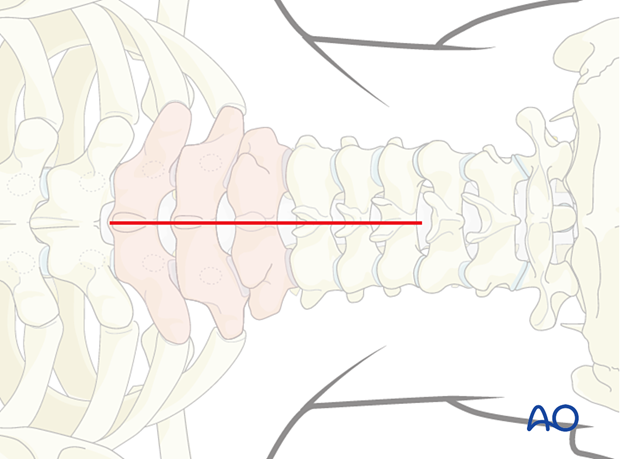
3. Dissection
The dissection is carried down in the midline through the subcutaneous tissue and the fascia of the upper back musculature, including the trapezius, latissimus dorsi, rhomboids, and paraspinous muscles to the tips of the spinous processes.

The dissection should be carried down through the midline to decrease bleeding.
It is necessary to confirm the vertebral level with fluoroscopy as soon as bony structures are visible. This is done before any further dissection.
Self-retaining retractors are used to expose the surgical field.
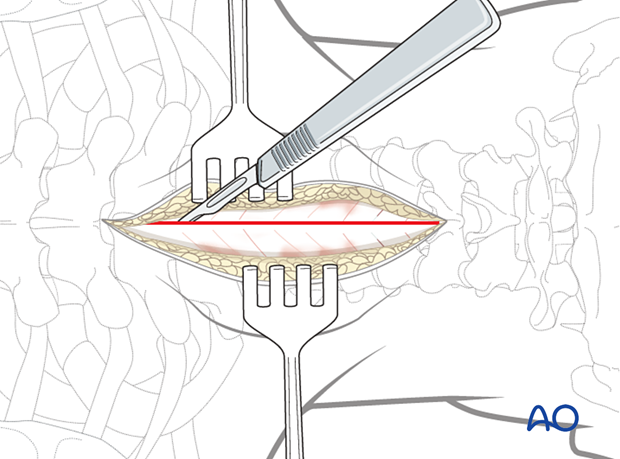
The paraspinal muscles are elevated subperiosteally from the underlying laminae using a Cobb elevator or electrocautery. Dissection is performed along the posterior bony elements bilaterally.
Review preoperative images to verify whether the tumor invades the lamina. In such cases, exposure of the posterior elements should be performed with great care, and the use of Cobb elevators should be avoided.
When operating on a primary tumor that involves the posterior element, great care should be taken not to enter the tumor during exposure.
The use of a subperiosteal dissection minimizes bleeding and muscle damage.

During exposure, care is taken not to injure the facet joint capsule of the levels cranial or caudal to the intended fusion, as this might lead to unintended adjacent level joint fusion or degeneration.
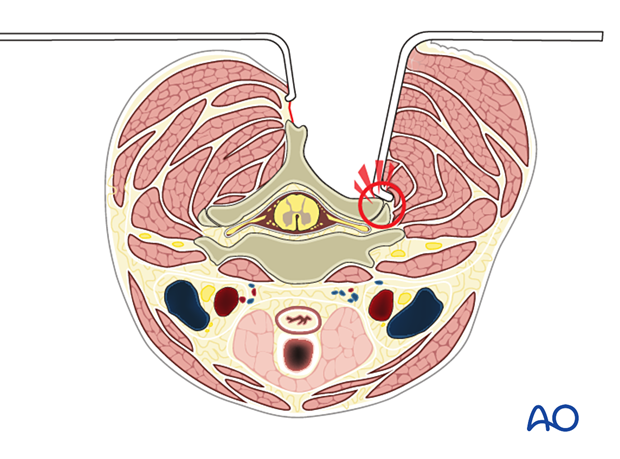
Posterior cervicothoracic exposure from C6 to T2
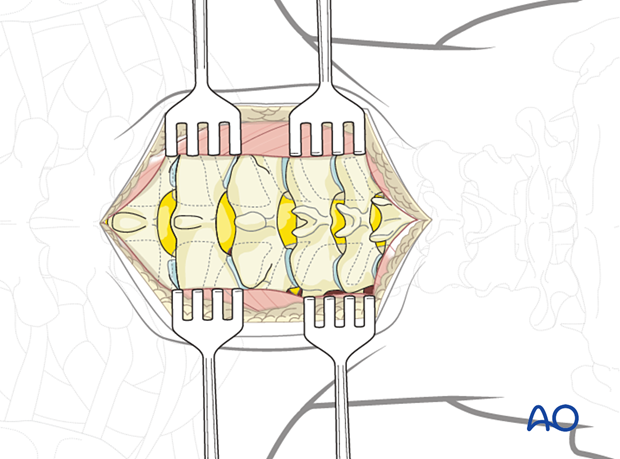
4. Closure
Drains are usually inserted via a separate stab incision.
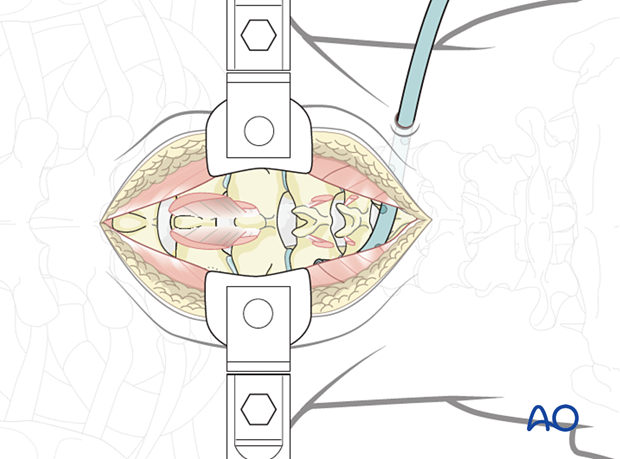
Once the surgical fixation and decompression have been performed, the muscles are approximated over a deep suction drain using interrupted sutures.
For patients undergoing revision metastatic spine tumor surgery and/or with a history of radiation, plastic surgery should perform the soft tissue reconstruction to decrease the risk of wound complications.
The fascial layer is closed with continuous or interrupted sutures.
For patients undergoing metastatic spine tumor surgery, intrawound vancomycin can be applied to decrease the risk of postoperative wound complications.
The approximation of the posterior cervicothoracic muscles is subject to considerable tension and fascial dehiscence. The use of nonabsorbable sutures for fascial closure should be considered.
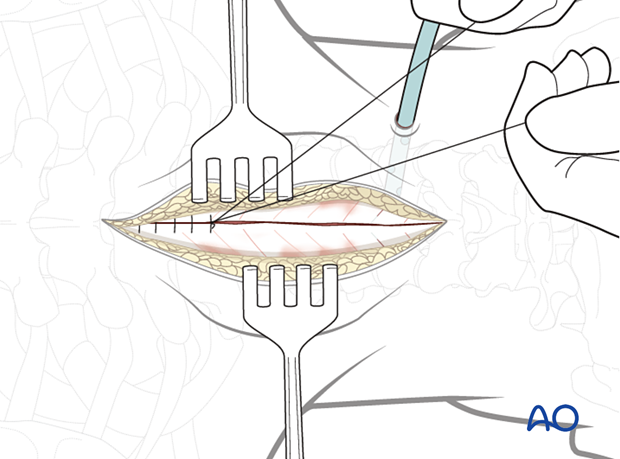
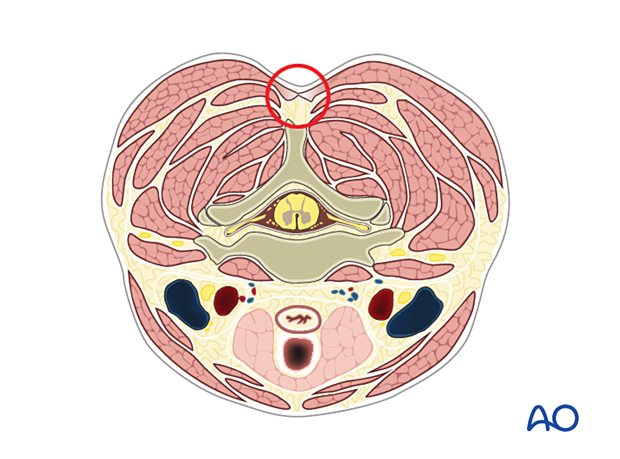
The subcutaneous layers and skin are sutured.














